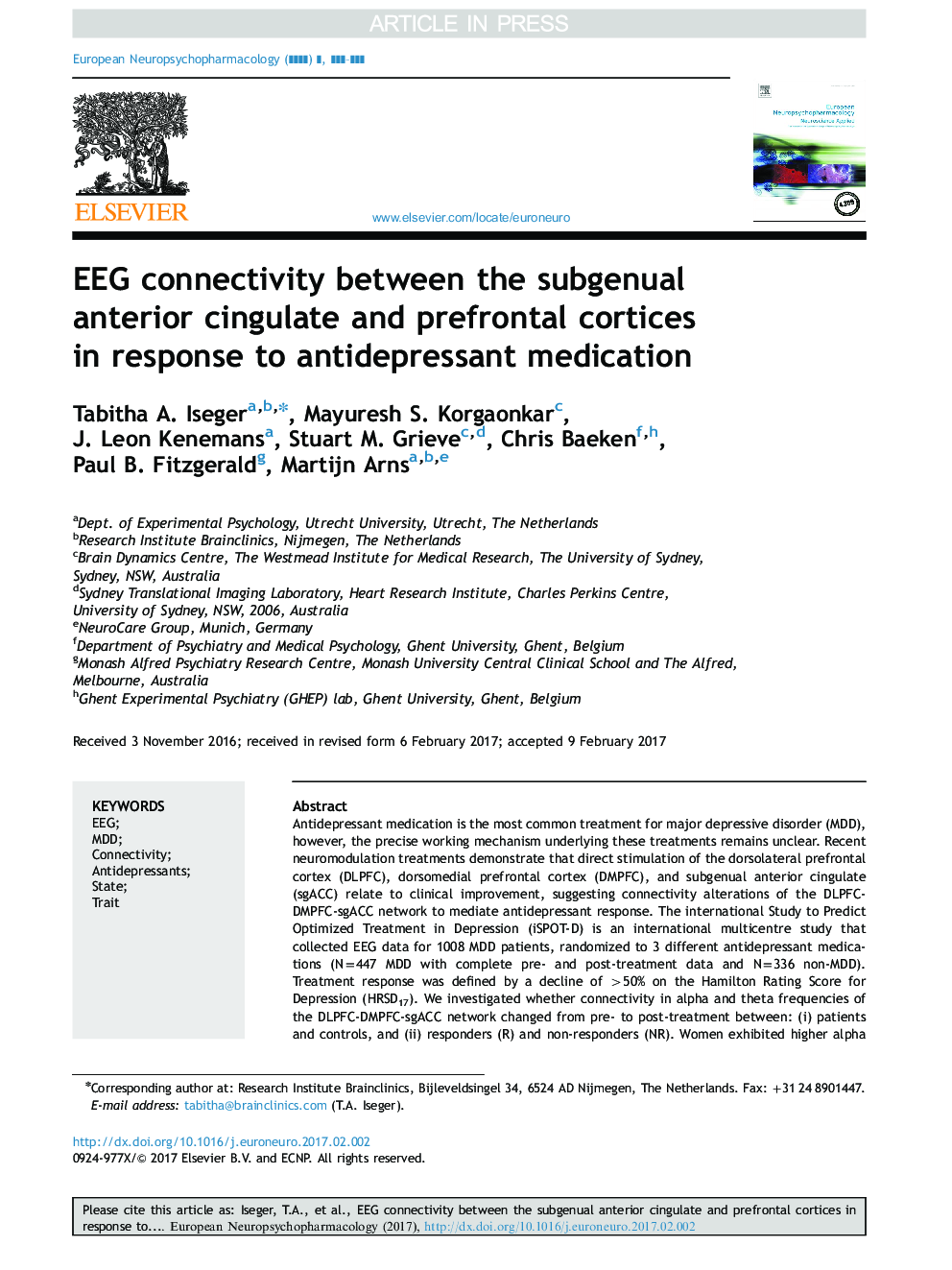| Article ID | Journal | Published Year | Pages | File Type |
|---|---|---|---|---|
| 4930349 | European Neuropsychopharmacology | 2017 | 12 Pages |
Abstract
Antidepressant medication is the most common treatment for major depressive disorder (MDD), however, the precise working mechanism underlying these treatments remains unclear. Recent neuromodulation treatments demonstrate that direct stimulation of the dorsolateral prefrontal cortex (DLPFC), dorsomedial prefrontal cortex (DMPFC), and subgenual anterior cingulate (sgACC) relate to clinical improvement, suggesting connectivity alterations of the DLPFC-DMPFC-sgACC network to mediate antidepressant response. The international Study to Predict Optimized Treatment in Depression (iSPOT-D) is an international multicentre study that collected EEG data for 1008 MDD patients, randomized to 3 different antidepressant medications (N=447 MDD with complete pre- and post-treatment data and N=336 non-MDD). Treatment response was defined by a decline of >50% on the Hamilton Rating Score for Depression (HRSD17). We investigated whether connectivity in alpha and theta frequencies of the DLPFC-DMPFC-sgACC network changed from pre- to post-treatment between: (i) patients and controls, and (ii) responders (R) and non-responders (NR). Women exhibited higher alpha and theta connectivity compared to males, both pre- and post-treatment. Furthermore, theta, but not alpha, hypo-connectivity was found for MDD patients. A decreased alpha connectivity after treatment was found only for male responders, while non-responders and females exhibited no changes in alpha connectivity. Decreasing alpha connectivity could potentially serve as a treatment emergent biomarker, in males only. Furthermore, it could be useful to a priori stratify by gender for future MDD studies.
Related Topics
Life Sciences
Neuroscience
Biological Psychiatry
Authors
Tabitha A. Iseger, Mayuresh S. Korgaonkar, J. Leon Kenemans, Stuart M. Grieve, Chris Baeken, Paul B. Fitzgerald, Martijn Arns,
